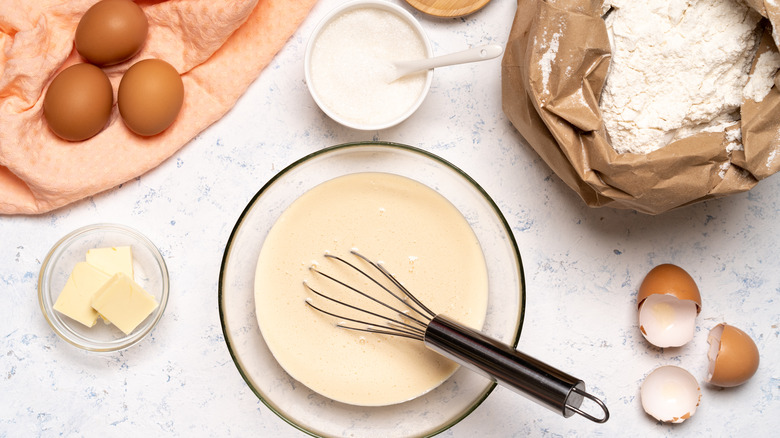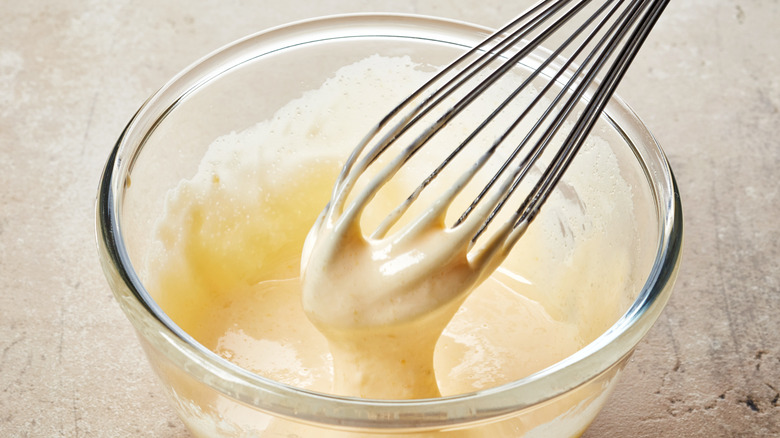Balance Is Key To Perfectly Tempered Eggs
When the thought of eggs comes to mind, oftentimes scrambled with a side of bacon or poached to top an English muffin for a benedict breakfast are the things first envisioned. However, the number of dishes that use eggs as a key ingredient is quite endless. Whether you're baking up a sweet treat, cooking up a casserole, or making a meatloaf meal, eggs act as the binder that holds everything together.
In fact, beyond dishes, eggs help hold sauces together and act as the emulsifying agent in recipes like hollandaise, Béarnaise, and carbonara sauce, and are crucial in custards for making ice cream, pudding, and pastry cream. While these sauces contain eggs, the protein is tempered so it doesn't cook or scramble, and instead forms a silky smooth consistency. According to the Pampered Chef, to temper is to introduce a hot liquid to a cold liquid slowly, bringing them both to a certain range in temperature, before fully combining them. To do this takes patience and persistence, which is ultimately the trickiest part.
Some tips to ease the stress
One thing is for certain, you'll need both hands. According to Bon Appétit, tempering is a bit of a multi-task, as you'll need to whisk your cold egg mixture vigorously, while slowly drizzling in your hot liquid. If you have an extra pair of hands in the kitchen, that might ease the stress. If not, placing a damp kitchen towel that's rolled and wrapped around the bottom of your bowl, almost like a nest, will allow you to whisk with one hand, creating stability and preventing the bowl from moving around. Once the temperature of the egg mixture has risen, they're now more protected from curdling when joining the rest of the hot liquid.
Another tip for tempering eggs a bit quicker is to use a blender. According to Serious Eats, using a high-powered blender and blending your hot mixture on high, then adding raw whole eggs in one-by-one is a simple shortcut to this tedious task. Blending disperses the eggs quickly, reducing their chance of curdling due to the speed of emulsion. This also occurs when using an immersion blender in a pot and adding eggs in that way. With these methods in mind, your next attempt at making tempered eggs will create the perfect consistency.

